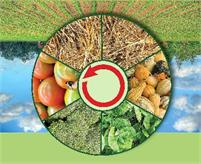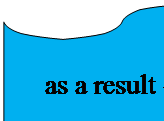Text A Crop rotation

Crop rotation is known to be a system of growing different kinds of crops one after another on the same land. A rotation may be considered good or bad depending on its effect on soil productivity. It should also be measured by its economic returns.
Continuous growth of the same crop has been found to result in the loss of organic matter from the soil, which is sure to have a bad effect on its tilth. The growth of grass pasture and deep-rooted legume crops in rotation is likely to correct this situation through maintenance of organic matter. Besides, the alternation of deep-rooted and shallow-rooted crops prevents continuous absorption of plant nutrients from the same root zone year after year. As to nitrogen for non-leguminous crops, it may be provided by legumes included in the rotation. However, it should be mentioned that rotations are unlikely to supply other plant nutrients in which the soil may be deficient.
Legumes are more efficient in fixation of nitrogen on soils with low rather than high nitrogen content. For this reason, a legume is considered to be a better nitrogen fixer when two or more crops come between applications of barnyard manure. Naturally, legume crops are usually grown previous to crops that require large amounts of nitrogen. Thus, increased yields of crops that follow alfalfa seem to result from the addition of nitrogen to the soil contributed by alfalfa crop.
The preceding crop has an important influence on crop yields. So, in case deep-rooted legumes are followed by corn, the latter may yield more as a result of better root penetration as well as due to nitrogen residues.
Crop sequences are very important under dryland conditions because of the difference in residual soil moisture left by various preceding crops. Thus, small grains yield more after corn than after small grains or sorghum, because corn leaves more moisture in the soil.
Though the proper rotation is of great importance in farming, this practice alone is unlikely to produce maximum yields. For the highest yields to be obtained both crop rotation and fertilization are to be used.
 |

 REMEMBER !
REMEMBER !
Grammar and vocabulary activities
6. Translate the following sentences containing the complex subject.
1. Proper crop rotation is sure to help in maintaining soil fertility and producing higher yields.
2. Crop rotation alone is unlikely to increase fertility of this soil.
3. Such rotation does not seem to be suitable for the temperate zone.
4. The alternation of grasses and legumes is likely to increase the organic matter content of the soil.
5. Continuous growth of the same crop is certain to cause the loss of organic matter from the soil.
6. Good development of this crop seems to be the result of growing it after a legume crop.
7. Translate the sentences paying attention to the function of the infinitive.
1. То find the optimum system of crop rotation will be of the greatest importance for increasing crop production.
2. The system of crop rotation to be used depends on different agronomic factors.
3. To find the optimum system of crop rotation one should know the agronomic and economic situation on the farm.
4. The system of crop rotation we have chosen is likely to produce good results.
5. This system of crop rotation is considered to be suitable for soil and climate conditions of the area.
6. In order to obtain good results with this system of crop rotation we must also apply proper fertilizers.
7. The system of crop rotation chosen has been found to be the best for our region.
8. This system of crop rotation combined with the proper fertilization system is sure to produce good results.
8. Translate the following word combinations:
proper crop rotation system; green manure crops; small grains; deep-rooted legume crop; plant nutrient deficiency; nitrogen-fixing crop; under improper conditions; barnyard manure application; proper soil fertility maintenance; plant nutrient balance; much higher soil productivity.
9. Find the passage in text A about the influence of legumes on the following crop.
Listening and Speaking Focus
 https://youtu.be/mJwOr-pe_I8
https://youtu.be/mJwOr-pe_I8
Watch the video, answer the following questions:
1. What is crop rotation?
2. Why crop rotation is an important thing?
3. What types of crop rotation have you learned?








